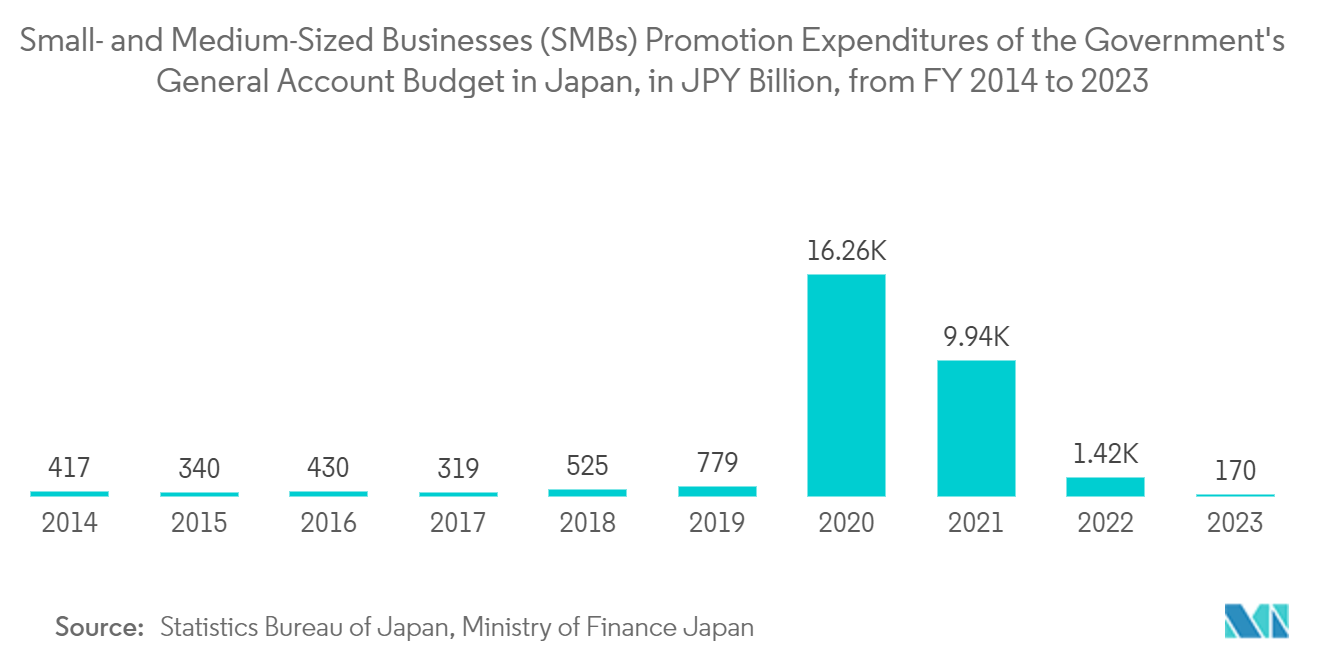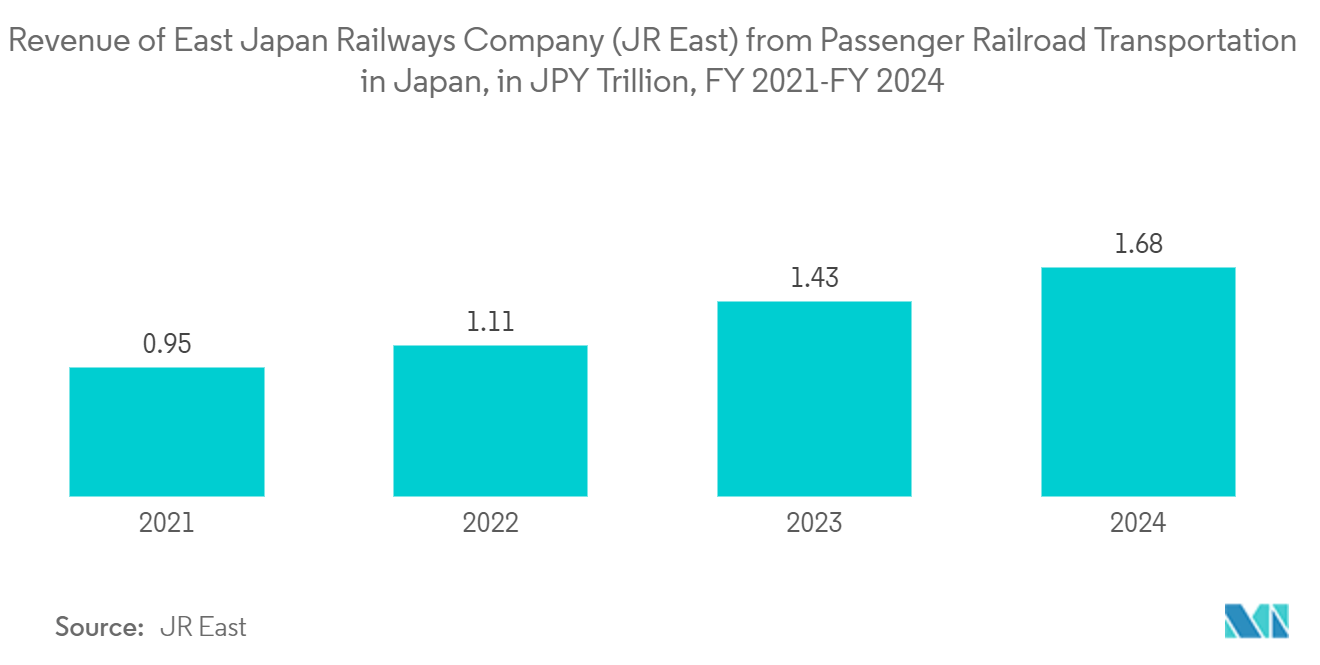Market Trends of Japan Surveillance Analog Camera Industry
Cost-Effectiveness of Analog Cameras is Expected to Drive the Market Growth
- Analog cameras typically have a lower base price than their digital IP-based counterparts. This can be a significant advantage for organizations with limited budgets or those looking to expand their surveillance coverage across multiple sites. The lower initial investment makes analog cameras more accessible, especially for small and medium-sized businesses or public-sector entities. In addition, as per the Ministry of Finance Japan, in fiscal year 2023, the Japanese national government allocated an initial budget of around JPY 170 billion (~USD 1.2 billion) for promoting small- and medium-sized businesses (SMBs).
- Analog cameras generally require less complex and less expensive infrastructure than IP-based systems. Analog cameras can often be easily integrated into existing coaxial cable-based networks, which are still widely used in Japan. Organizations can avoid costly network infrastructure upgrades, such as installing new Ethernet cabling or network switches. The more straightforward installation process for analog cameras reduces labor costs and project timelines.
- Analog cameras boast enhanced durability, with fewer moving parts, necessitating less frequent maintenance and repairs. Maintaining analog systems is simpler and more cost-effective, demanding fewer specialized technicians and resources. Moreover, analog cameras exhibit lower power consumption, translating to reduced energy expenditures for organizations.
- The cost efficiency of analog cameras empowers organizations to upgrade their surveillance setups gradually. Rather than opting for a complete and expensive overhaul, organizations can systematically integrate or replace analog cameras within their current framework. This phased strategy allows for a more manageable financial outlay, enabling organizations to bolster their surveillance capabilities.

Transportation and Logistics End-User Industry is Expected to Hold a Significant Market Share
- Japan's transportation and logistics network is extensive and geographically dispersed, encompassing highways, railways, ports, airports, warehouses, and distribution centers. East Japan Railways Company (JR East) also saw its revenue from passenger railway transportation in Japan reach around JPY 1.68 trillion (~USD 10.7 billion) in FY 2024, marking an increase from FY 2023. Monitoring and securing this vast infrastructure requires a large-scale surveillance system that can be cost-effectively deployed using analog cameras. Analog cameras enable organizations to cover a wider area with a lower overall investment.
- Many transportation and logistics facilities, such as outdoor storage yards, loading docks, and open-air terminals, are exposed to harsh environmental conditions. These include extreme temperatures, high humidity, dust, and other factors that can adversely impact the performance and reliability of electronic equipment. Analog cameras are generally more resilient and better equipped to withstand these challenging environmental conditions, offering superior durability and longevity.
- Several transportation and logistics firms in Japan have heavily invested in analog cameras deeply woven into their infrastructure. Swapping these analog setups for modern IP-based solutions proves intricate and expensive. It typically demands substantial network overhauls and intricate system integrations. Opting for analog cameras presents a more gradual, cost-efficient path. This approach facilitates seamless integration with the current infrastructure, allowing organizations to maximize their prior investments.
- The transportation and logistics sector prioritizes cost efficiency, striving to streamline operations and stay competitive. With lower initial costs, analog cameras appeal to budget-conscious organizations in this industry. Moreover, the decreased infrastructure and maintenance expenses further bolster the cost-effectiveness of analog cameras, a pivotal factor for transportation and logistics players.


